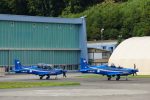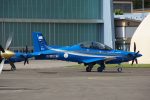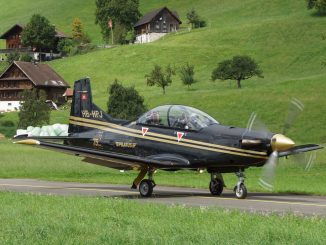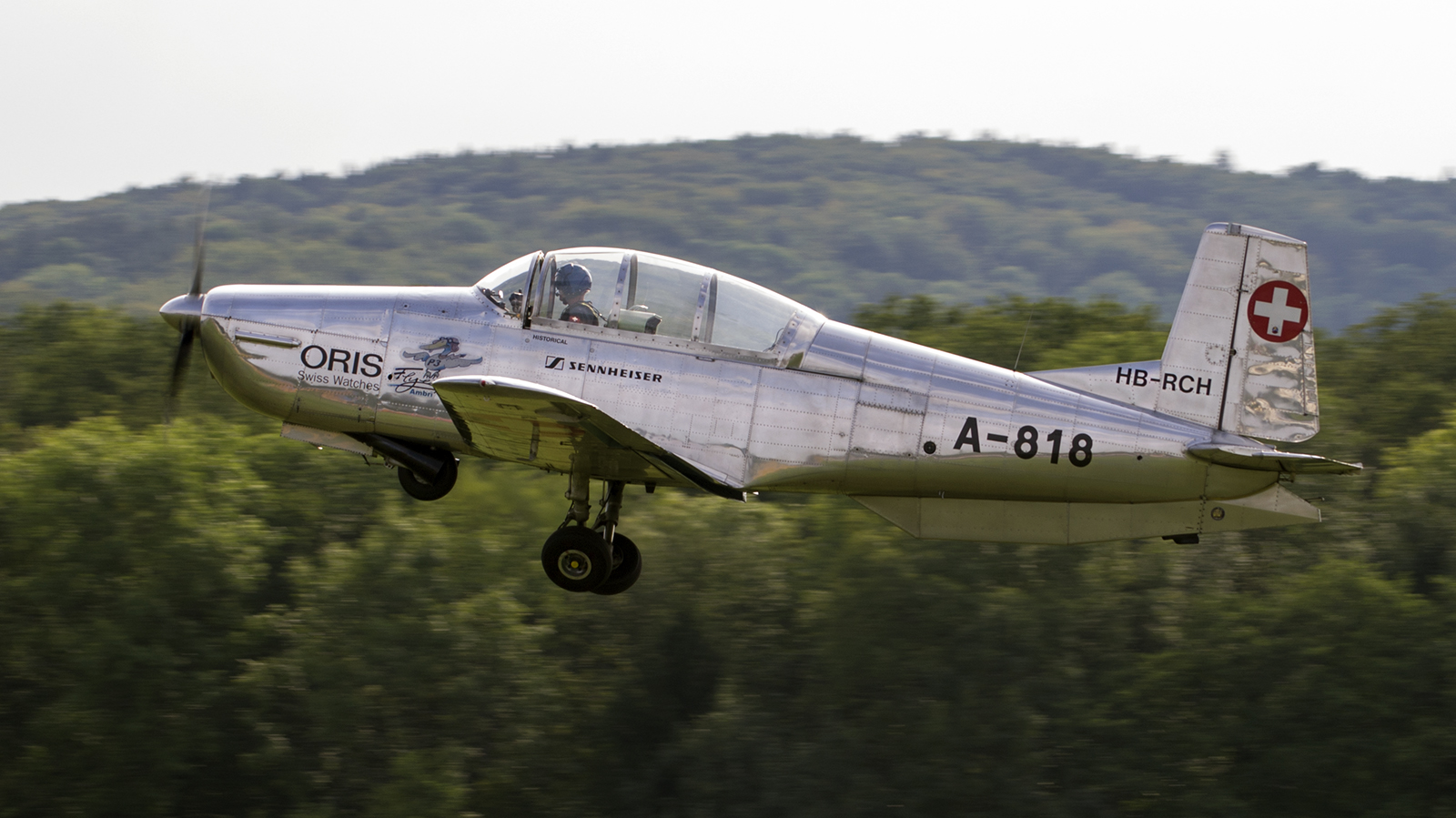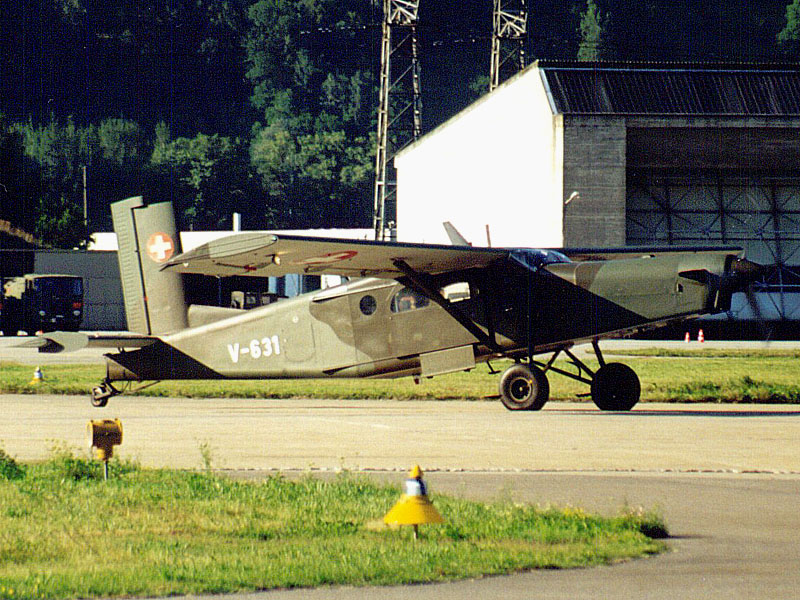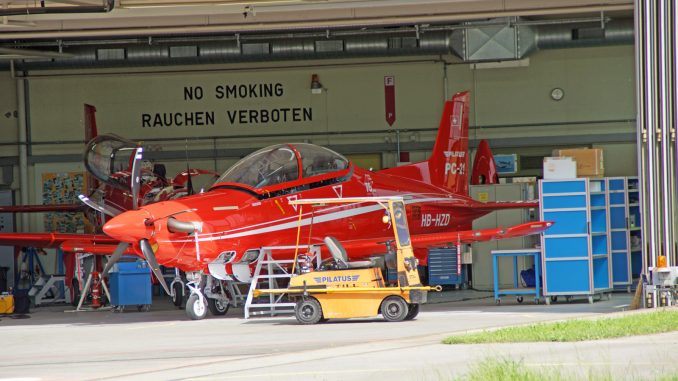
In November 1997, Pilatus flew a modified PC-7 Mk.II in order to test improvements for a prospective next generation turboprop trainer. As a result of these tests, Pilatus elected to fund the development of a new training system in November 1998; development of the new trainer, designated as the Pilatus PC-21, formally started in January 1999.
| Role | Advanced trainer aircraft |
|---|---|
| Manufacturer | Pilatus Aircraft |
| Designer | Pilatus Aircraft |
| First flight | 1 July 2002 |
| Introduction | April 2008 |
| Status | Active service |
| Primary users | Swiss Air Force Republic of Singapore Air Force Royal Australian Air Force Royal Saudi Air Force |
| Produced | 2002–present |
| Number built | 211 |
Operators
- Australia
- France
- Jordan
- Qatar
- Saudi Arabia
- Singapore
- Spain
- Switzerland
- United Arab Emirates
- United Kingdom
Specifications (PC-21)
General characteristics
- Crew: 2
- Length: 11.233 m (36 ft 10 in)
- Wingspan: 9.108 m (29 ft 11 in)
- Height: 3.74 m (12 ft 3 in)
- Wing area: 15.221 m2 (163.84 sq ft)
- Empty weight: 2,270 kg (5,004 lb)
- Max takeoff weight: 3,100 kg (6,834 lb) aerobatic
-
-
-
- 4,250 kg (9,370 lb) normal
-
-
- Powerplant: 1 × Pratt & Whitney Canada PT6A-68B turboprop engine, 1,200 kW (1,600 hp)
- Propellers: 5-bladed constant-speed propeller
Performance
- Maximum speed: 685 km/h (426 mph, 370 kn)
- Stall speed: 170 km/h (110 mph, 92 kn) gear and flaps up (20 km/h (12 mph; 11 kn) less with flaps and gear down)
- Range: 1,333 km (828 mi, 720 nmi)
- Service ceiling: 11,580 m (37,990 ft)
- g limits: +8.0 –4.0 aerobatic / +5.0 to –2.5 utility
- Rate of climb: 20.317 m/s (3,999.4 ft/min)
- Wing loading: 208 kg/m2 (43 lb/sq ft)
- Power/mass: 0.39 kW/kg (0.24 hp/lb)
Armament
- Hardpoints: Provisions provided for 4× under-wing and 1× centerline external store stations, capable of mounting up to 1,150 kg (2,540 lb) of payload of air-to-ground weapons to operate in the counter-insurgency role.
Photos Rob Vogelaar and Marcel van Leeuwen



